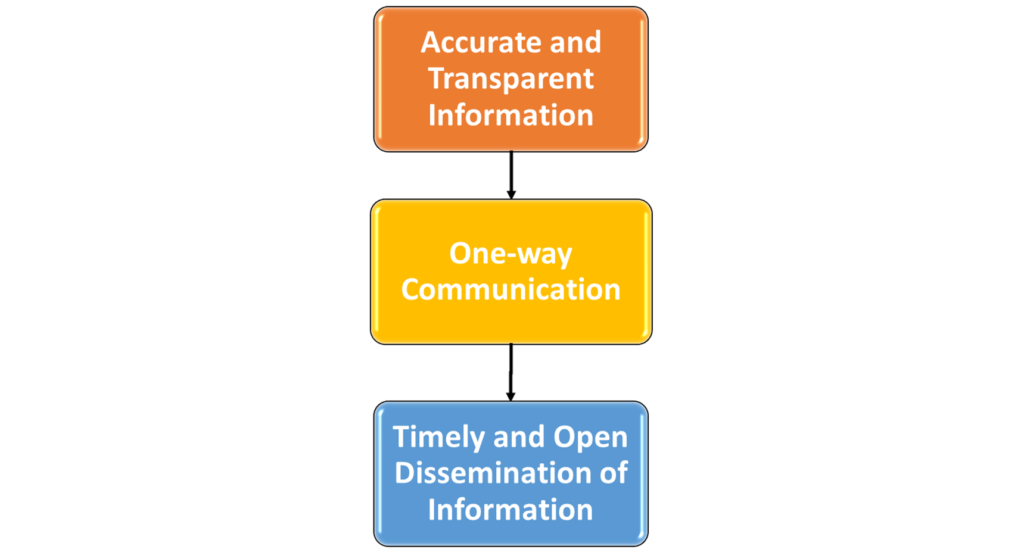PR Theory 2: The Public Information Model
This theory of PR describes the downward, one-way provision of accurate and reliable information to the public. Through PR, organizations attempt to demonstrate good will and transparency by supplying the public with reliable and well-timed information to help them make informed decisions about important matters. This theory emphasizes the role of communication professionals as facilitators of information flow – not shapers of opinion or propagandists, at least not primarily. In this role, PR strives for accurate and complete information in the messages it disseminates. During health crises or times of emergency, government information practice appears to follow this system, although labelling such activity as “PR” might be somewhat fanciful.
Professionals who apply the Public Information Model act as bridges between organizations and the public, so take care to issue reliable information that informs and educates the audience. The model is linear and unidirectional by design. The sender cannot become receiver. This is a one-to-many, one-way model, whose validity rests on the veracity and utility of the information contained in its outputs. The senders cannot engage on specific terms with users of the messages.

There are a few modern-day scenarios to which this model can be applied, namely infrequent, unusual, important communications from government or some other authority. The arrows in this diagram indicate process order – not direction or flow of information. In most diagrams that explain the PIM, the connecting lines will not feature arrows. I have added arrows to indicate the linearity of the model and hierarchical ordering of its elements.
